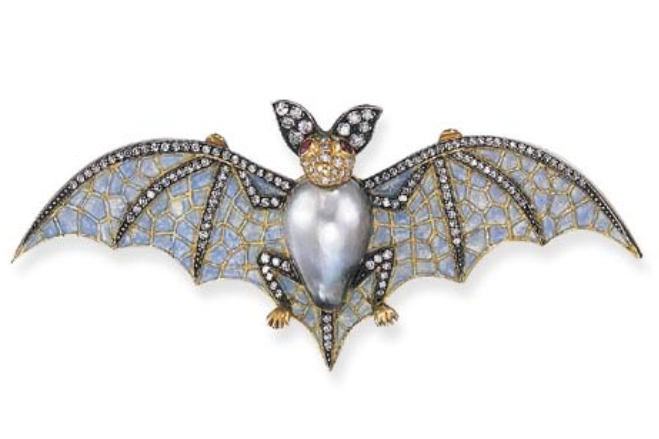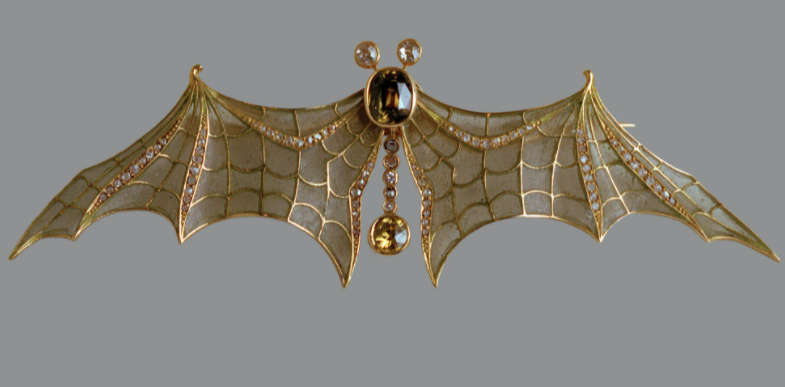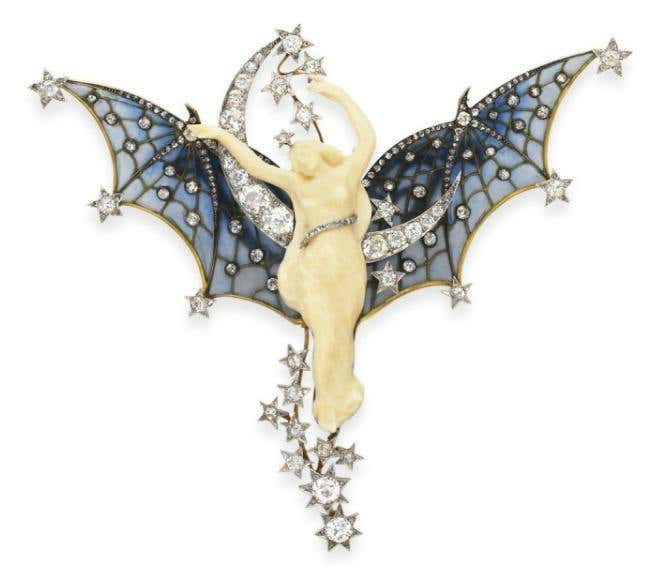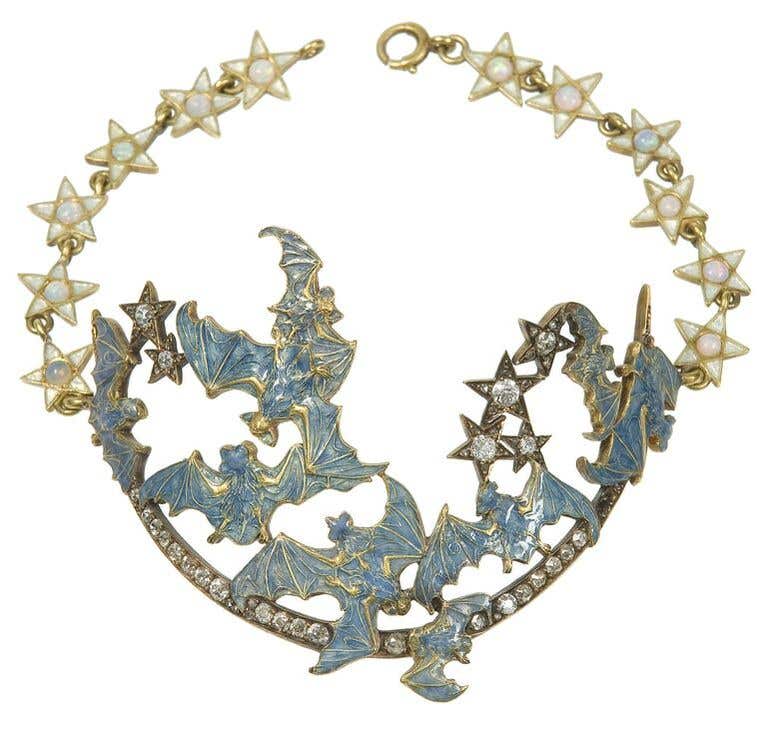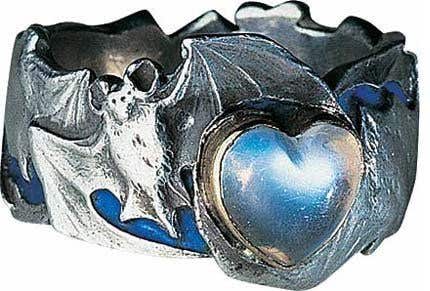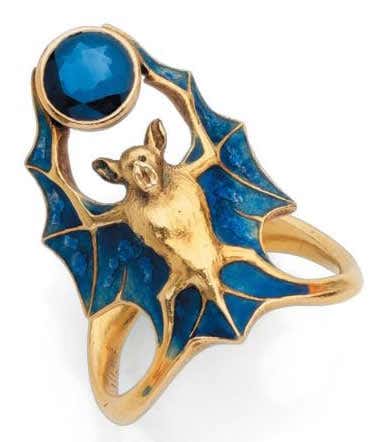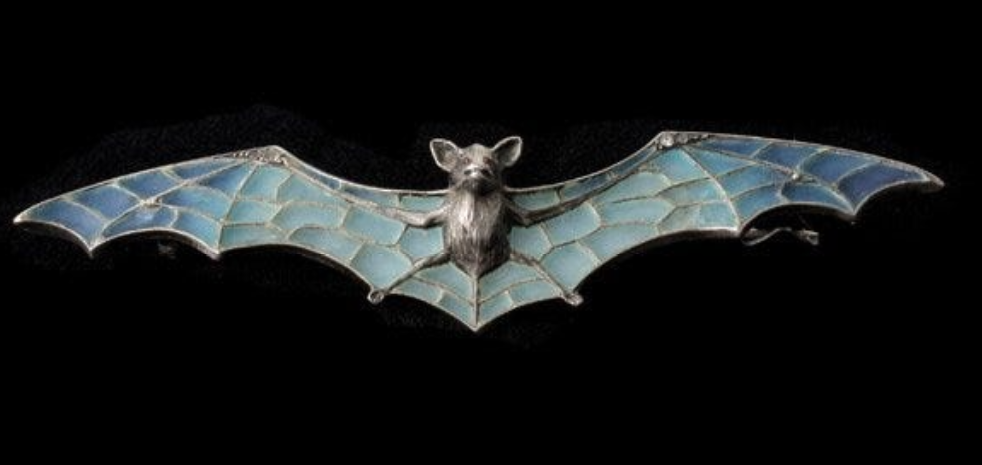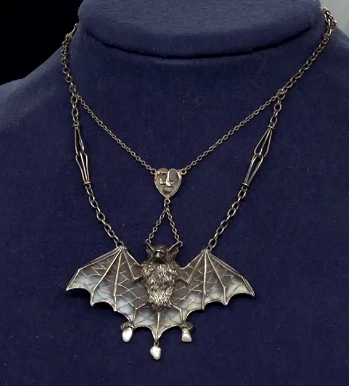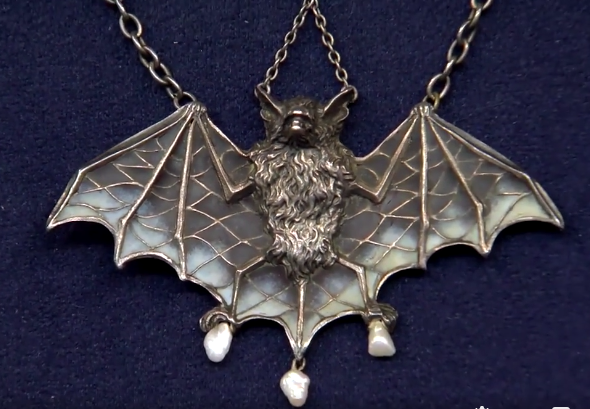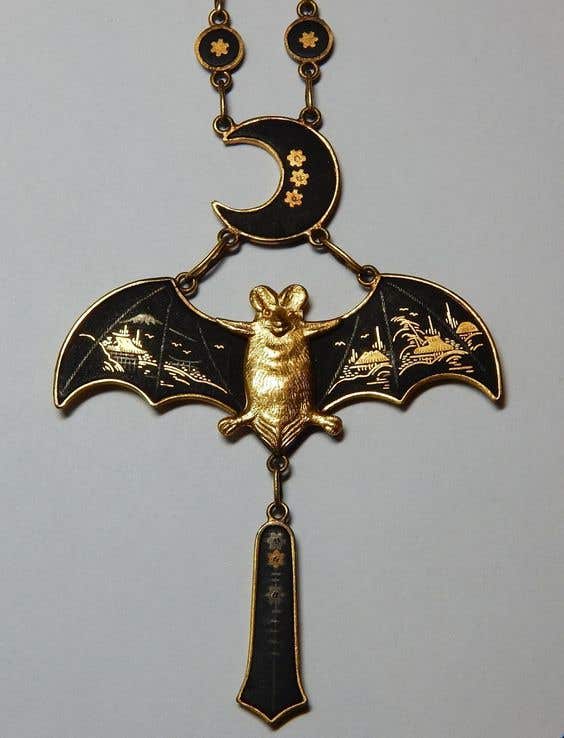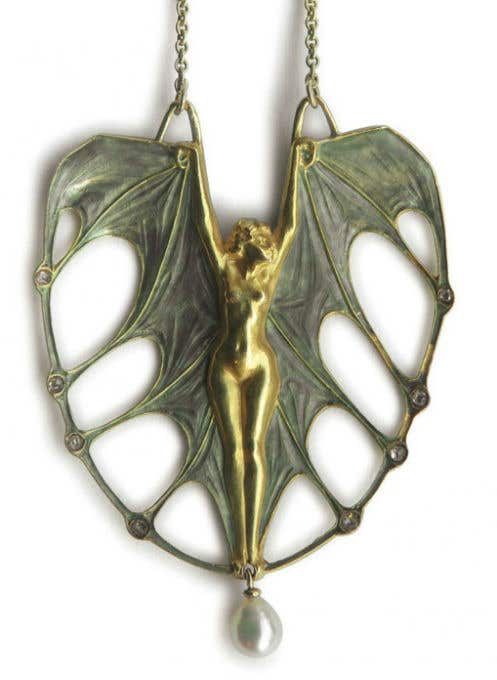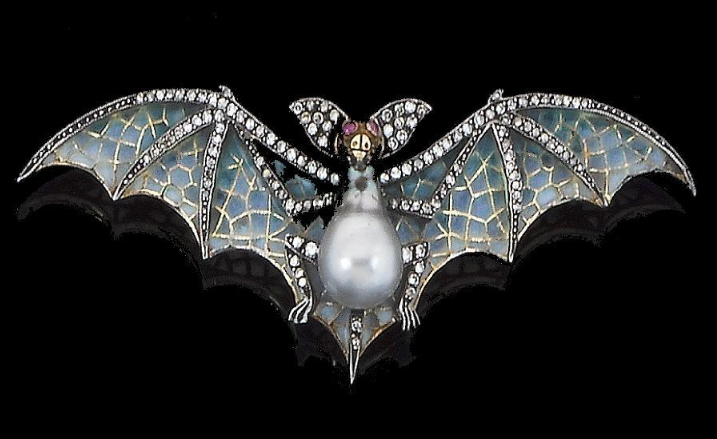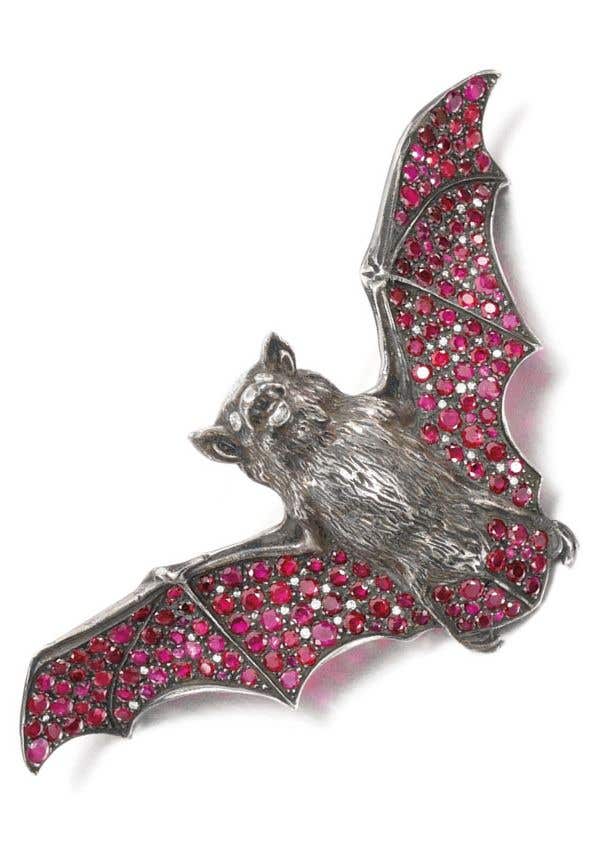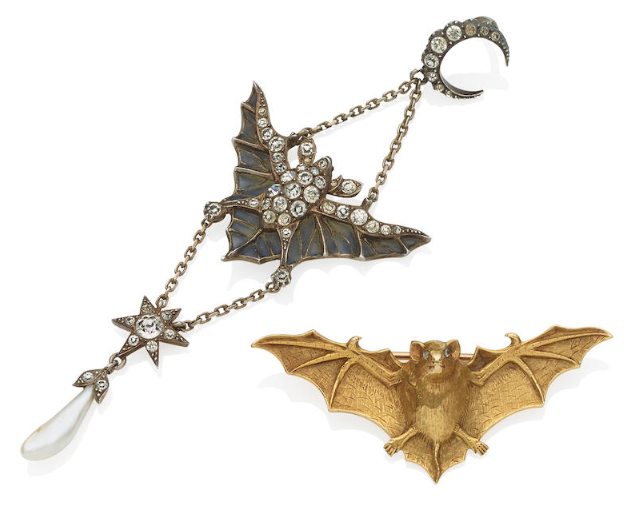Bats Soar High in Art Nouveau Jewelry
As fascination for Asian motifs spread through the Western world during the nineteenth century, bats became popular in Art Nouveau jewelry as symbols of luck and happiness.
Although bats have long been seen as a “scary” symbol of Halloween in the Western world and viewed through a gothic eye, thanks in part to Bram Stoker’s Dracula (1897), which depicts vampires as shape-shifting bats, these creatures of the night are seen as symbols of luck or reincarnation in other cultures (not to mention that scientists view their navigational systems as an evolutionary virtuoso act).
Bats often represent death in the sense of letting go of the old, and bringing in the new. They are symbols of transition, of initiation, and the start of a new beginning. In Chinese, the pronunciation of the words for “bat” and “happiness” are both fu. In Japanese, the bat has the same symbol as “luck,” and so it is the Asian equivalent of the Bluebird of Happiness.
As fascination for oriental motifs spread through the United States and Great Britain during the nineteenth century, bats began appearing frequently in Art Nouveau design and were a popular motif in jewelry, created in gold, plique-à-jour enamel, diamonds, rubies and other gems by René Lalique and other designers. Lalique appeared to be so fond of bats that he even decorated his showcase at the 1900 Universal Exhibition in Paris with them.
With the influence of Japonisme, Art Nouveau bats are more symbols of luck and happiness than spooky creatures, and these 13 pieces of jewelry showcase the mammal in beautiful form:
